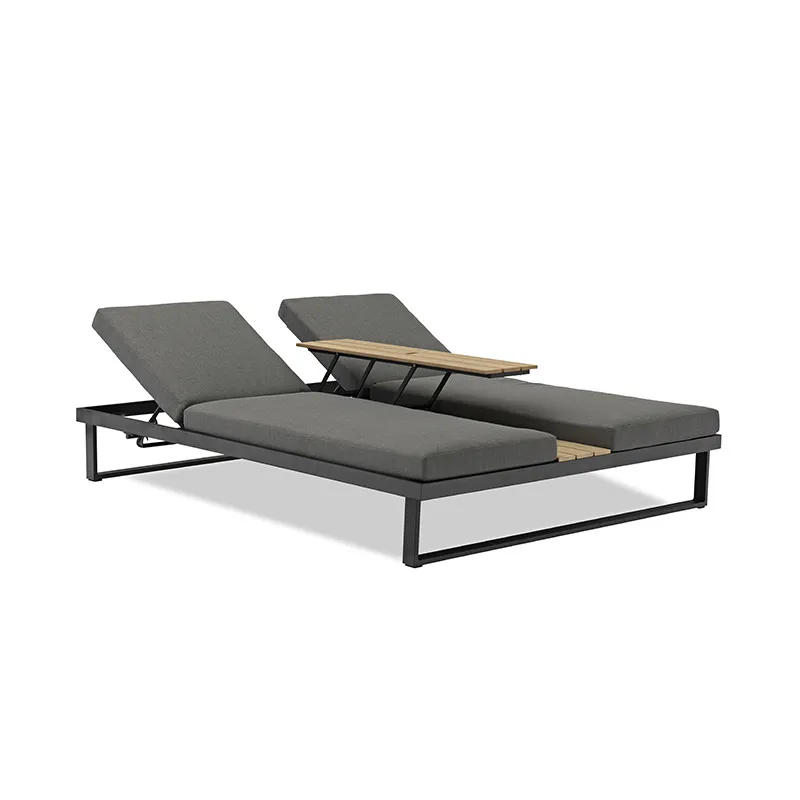
Street Furniture
-
NameSteet Furniture
-
Dimension (CM)W150 * D47* H43
-
Frame MaterialSteel
-
Frame ColorDark
-
Material SeatingPolywood
-
Cushionwithout cushion
Park Bench is a common feature in public outdoor spaces
-
● Material
Park benches are made from a variety of materials, including wood, metal, and sometimes recycled plastic. These materials are chosen for their durability and resistance to weather conditions
-
● Design
The design of park benches can range from simple and functional to intricate and decorative, often blending in with their natural surroundings. Most park benches feature a long seat and a backrest, and some also include armrests
-
● Seating
A park bench is typically long enough to accommodate two or more people. It serves as a social space where people can rest, converse, or simply enjoy the view
-
● Durability
Park benches are built to withstand outdoor conditions and frequent use. They are often treated or painted to resist rust, decay, and damage from the elements
-
● Placement
Park benches are strategically placed in areas of the park where people might need a rest, such as along walking paths, near playgrounds, or in quiet, scenic spots
-
● Maintenance
Despite being exposed to the elements, park benches are relatively easy to maintain. They can be cleaned with simple tools and methods and rarely require extensive repairs

Fabric care instructions
The multifunctional sun resistant fabric adopts anti splash treatment, which not only has high color fastness, but also a delicate and soft touch, suitable for indoor and outdoor furniture. It is recommended to clean and maintain the product during use to extend the service life of the fabric. When cleaning, rinse with clean water or gently wipe with a colorless, clean, and damp towel (soft bristled brush); If there are oil stains, a neutral cleaning agent (1:5) can be used to dilute and wash off. Stubborn stains or mold spots can be washed with bleach, and it is best to try a small area first to ensure the best effect. The activity level of surface molecules on fabrics varies in winter and summer seasons. In winter, warm water (below 38 ° C) can be used for washing, which can easily accelerate the decomposition of stains; In summer, it can be washed with water at room temperature and air dried naturally. Remember: Clothes should not be dry cleaned or dried using a dryer, and should not be directly exposed to high temperatures, otherwise the material may deteriorate or accelerate aging. If you need to perform other protective measures on the fabric again, please consult a professional fabric care professional.
| TECHNICAL DATA & FEATURES | |
|---|---|
| Physical Properties Fabrics Content | 100%Solution-Dyed PET Staple Fiber (Contents Recycled Materials) |
| Abrasion ASTM D4966-12(R2016) | >20000 Cycles |
| Pilling (ISO 12495-2 5000 Revolutions) (ASTM D4970-16E3 10000 Moments) | Class 3.0 Class 3.0 |
| Colorfastness to light (ISO 105-B04) (AATCC 16-3) | 7-8 Class3.5 @1200hrs |
| Crocking (AATCC 8-16) | Dry ≥ Class 4.5 Wet ≥ Class 4.5 |
| Tensile Strength (ASTM D5034) | Warp ≥ 350 Lbs Weft ≥ 250 Lbs |
| Tear Strength (ASTM D2261-13 R2017) | Warp ≥ 35 Lbs Weft ≥ 30 Lbs |
| Water repallent (AATCC 22-2005, max 100) | >80% |
| UPF Testing (AS/NZS4399-1996) | 50+ (Actual rating >500) |
| Pigmentation | Solution-Dyed |
| Warranty(Life Usage) | 3 years (>8 years) |
| CA Technical Bulletin 117-2013(UL FR) Flammability BS 5852(BS FR) | PASS UPON REQUEST |
Based on the average rate and different colors/styles may vary!
Note: The above data is the average technical data of internal laboratories and third-party testing companies.












